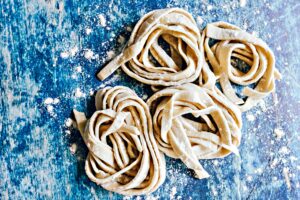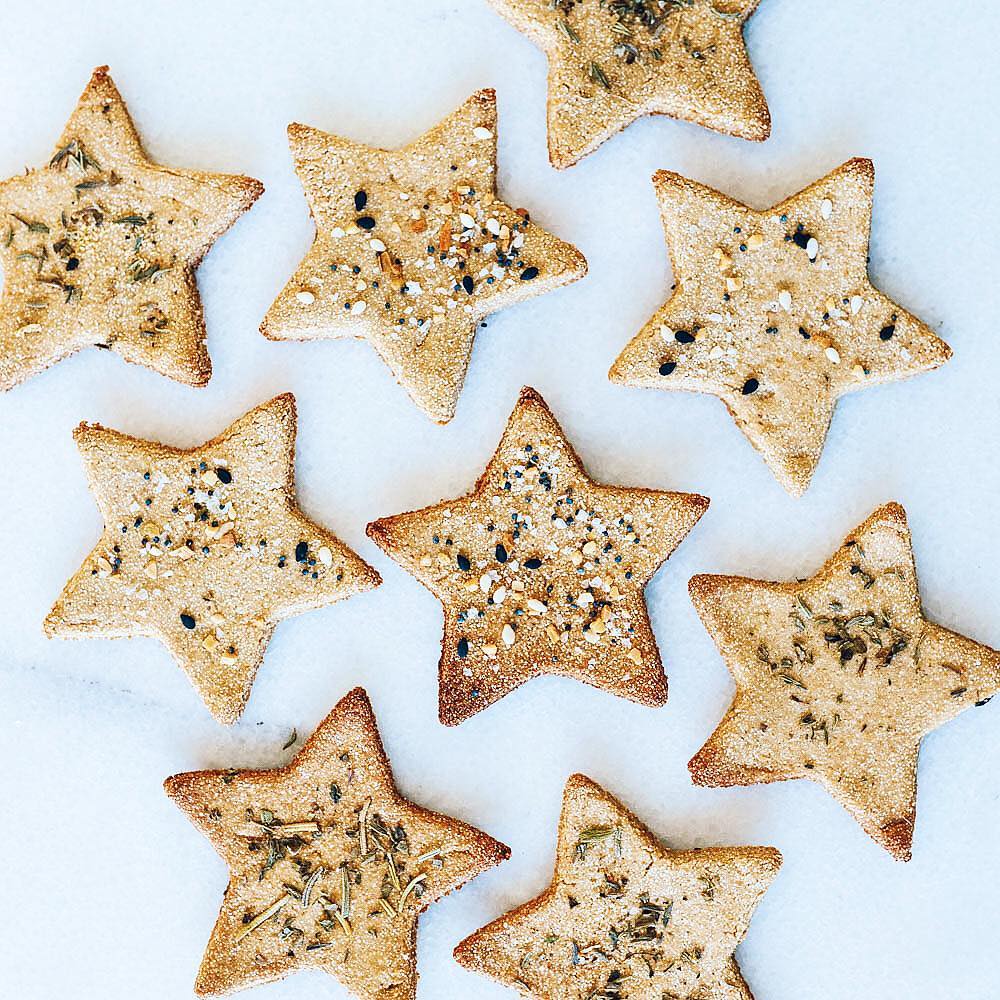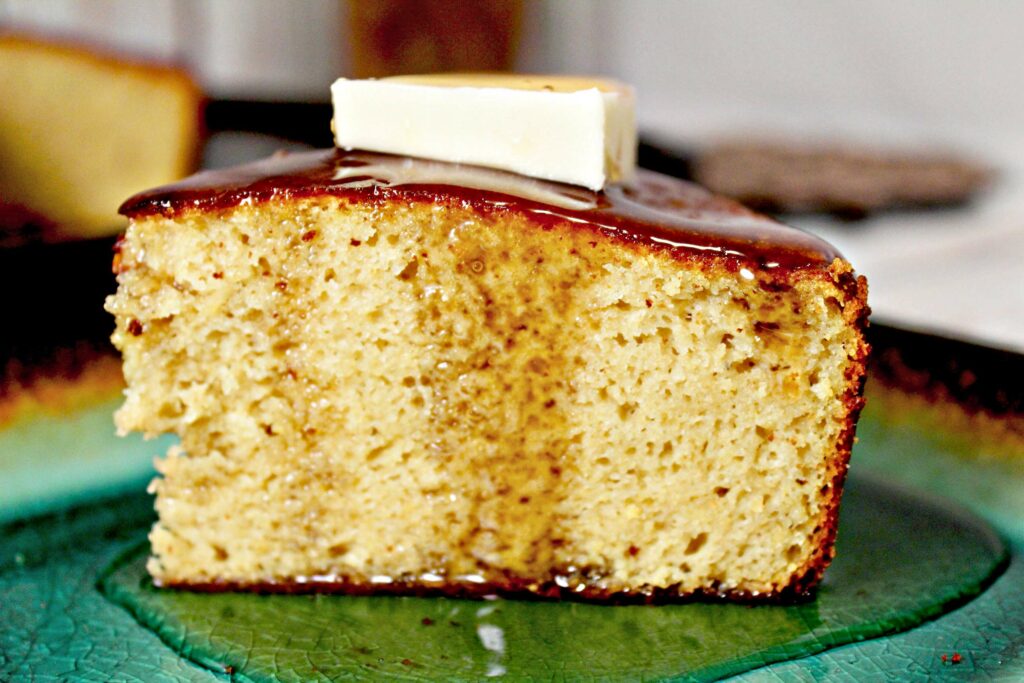
3-Ingredient Homemade Organic Kamut® Noodles
One of the most delicious things to make at home is a great pasta! Today we’re using the ancient wheat variety known as Kamut®.
The Best Amaranth Flour Baking Guide

Gluten-free baking is here to stay, and the most significant challenge seems to be getting the best bang for the buck when it comes to added flavor and nutrition. So how about exploring a flour that adds not only a unique and delightful texture but also outstanding health benefits to your finished baked products? Ancient Grain Amaranth flour is gaining popularity and trending for several reasons. Let’s take a closer look at how it is used and give you some recipes to use!
Amaranth is an ancient grain that has been cultivated for over eight thousand years. Amaranth references the Greek word meaning “everlasting” or “immortal.” This is a reference to the seed’s virtual indestructible nature. There are approximately 60 species of amaranth that have been identified. Some are cultivated for ornamental purposes. Some are used for leaf vegetables. The variety we’re discussing is the seed used for grain (sometimes called a pseudo-cereal). It will always be gluten-free because it cannot cross-pollenate with grass cereal grains like oats or wheat.
Amaranth grains contain about 65% carbohydrate, 14% protein, 12% water, and 7% fat. For every 3.5-ounce (100 gram) serving, amaranth contains about 370 calories. It has roughly 20% of your daily value of protein, dietary fiber, folate, pantothenic acid, vitamin B6, and several dietary minerals. It is particularly rich in manganese, magnesium, phosphorus, iron, and selenium.
Here are some of the health benefits of amaranth and amaranth flour:
Learning how to use this ancient flour to best fit the cultures that cultivated it would be to its best use advantage in your kitchen. Think ancient Mayan, Incan, and Aztec cultures. This flour is particularly popular when used in Mexican, Indian, and Asian cuisine today. This cuisine can be cooking applications for whole grains and baking flour applications. The grain has a distinct flavor with corn, grass, and earthy notes.
Made by grinding the seeds of the amaranth plant, Amaranth flour can be used in many different applications. It is most often used for flatbreads like tortillas. When used in bread, eggs or xanthan gum are needed to make them light. It is an excellent addition to quick bread like cakes and muffins. Amaranth doesn’t work well as a direct substitute for wheat flour. It is best used in combination with other gluten-free flours.
If you’re new to using amaranth flour, your best bet is to start with a recipe explicitly made for amaranth flour instead of trying to make substitutions. Once you get a feel for this nutritious gluten-free flour, you can start trying it as an alternative to wheat flour in your favorite recipes. Here are some recipes to try!

Bake Time: 30-35 minutes
Ingredients
1 cup Organic Grains Amaranth Flour
1 cup Organic Cornmeal
1 tsp. sea salt
2 tsp. baking powder
½ cup organic honey or agave nectar
3 large eggs
1 cup almond milk
1/3 cup olive oil or avocado oil
Directions
1) In a 2-quart-sized bowl, combine the amaranth flour, cornmeal, sea salt, and baking powder.
2) Whisk the honey, eggs, almond milk, and oil in a medium bowl. Add the egg mixture to the
dry mixture and mix until smooth, about 1 minute.
3) Pour batter into a greased 9-inch baking pan or deep cast-iron skillet. Bake at 400°F 30-35
minutes until golden brown and internal temperature over 180°F.

Bake Time: 10-12 minutes
Ingredients
2 eggs
½ cup butter, melted
1 cup packed dark brown sugar
2 cup Organic Grains Amaranth Flour
1 Tbsp. fresh orange zest
1 tsp. pumpkin pie spice
1/4 tsp. salt
1/2 tsp. baking powder
Directions
1) Preheat oven to 375° F. Line cookie sheet with parchment paper.
2) Combine all ingredients.
3) Drop cookies by the tablespoon onto parchment paper 2 inches apart.
4) Bake 10-12 minutes. Cool completely before removing from baking sheet.

Bake Time: 20-25 minutes
Ingredients
1 ½ cups Organic Grains Amaranth Flour
½ cup Organic Grains Sorghum Flour
¾ cup sugar
1 ½ tsp. baking powder
1 tsp salt
½ cup chopped pecans
2 tsp. pumpkin pie spice
1 Tbsp. cinnamon
1 cup pumpkin puree
1/3 cup maple syrup
3 eggs
1 Tbsp. vanilla
Directions:
1) Preheat oven to 350°F. Line a standard muffin pan with paper liners and spray with pan
spray.
2) In a medium bowl, combine amaranth flour, sugar, baking powder, salt, spice, and pecans.
3) In a large mixing bowl, whisk pumpkin puree, maple syrup, eggs, and vanilla. Add dry
ingredients to wet ingredients and mix well to combine.
4) Portion 1/3 cup of batter into each prepared muffin cup. Sprinkle muffins with additional
chopped pecans if desired.
5) Bake until a toothpick inserted in the center comes out clean, 20-25 minutes. Let sit for 10
minutes before serving.
We Think You'll Like

One of the most delicious things to make at home is a great pasta! Today we’re using the ancient wheat variety known as Kamut®.

We’re elevating your favorite weekend pancakes with the rich and warming flavors of vanilla, blackberries and cardamom.

This recipe celebrates everything we love about summer treats. It’s creamy, dreamy, sweet and delicious.

One of the most delicious things to make at home is a great pasta! Today we’re using the ancient wheat variety known as Kamut®.

We’re elevating your favorite weekend pancakes with the rich and warming flavors of vanilla, blackberries and cardamom.

This recipe celebrates everything we love about summer treats. It’s creamy, dreamy, sweet and delicious.